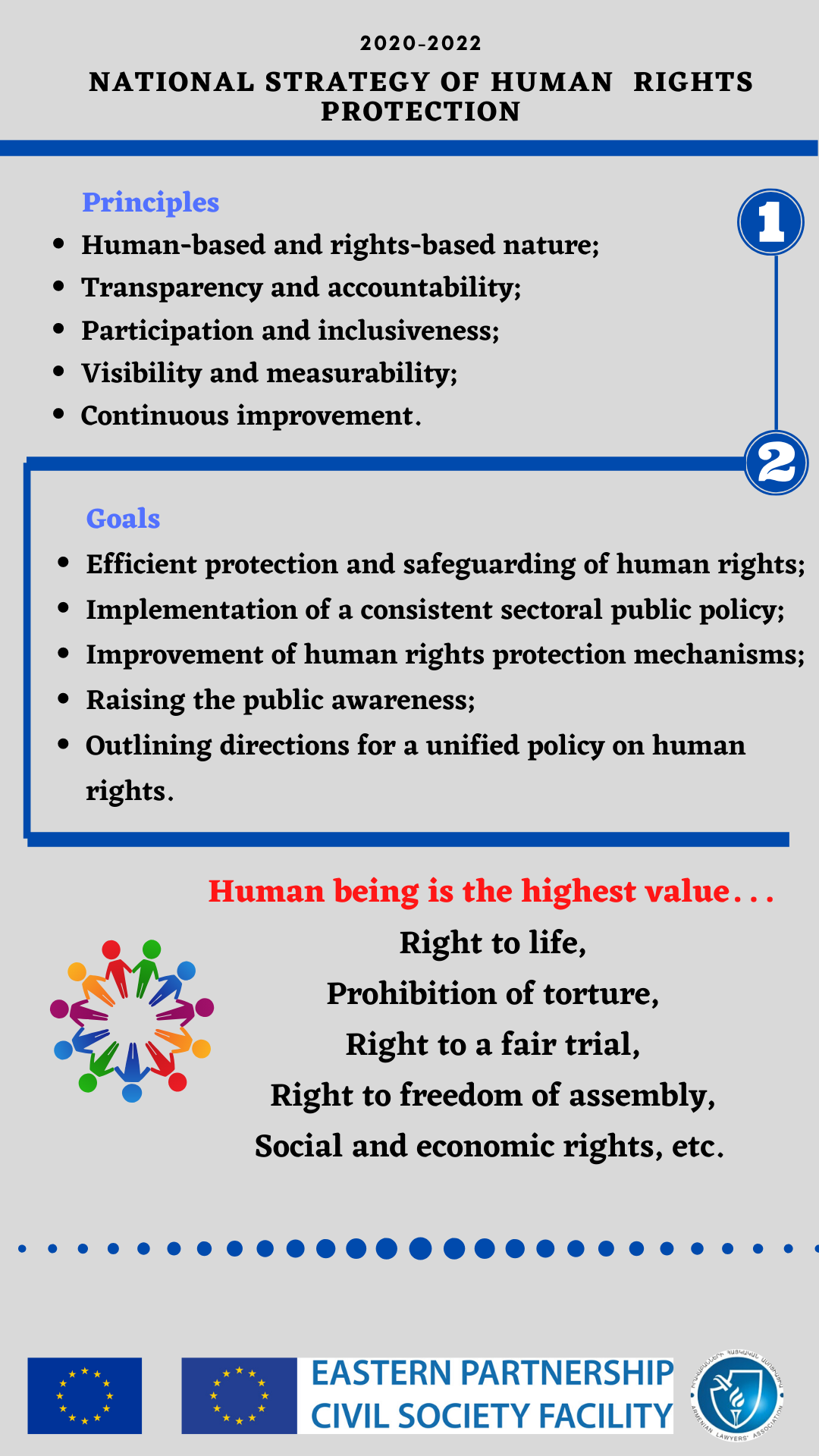
Human rights protection in the Republic of Armenia is a goal that all public administration bodies should strive to achieve by joint efforts. In this light, strategic planning and the establishment of specific actions by public administration bodies are vital for rights-based policymaking. Such strategic planning should focus on legal norms established under the Constitution of the Republic of Armenia and international law – on the one hand, and fair and comprehensive assessment of the human rights situation in the Republic of Armenia – on the other hand. In this respect, the entrenched Article 3 of the Constitution of the Republic of Armenia, according to which the human being represents the highest value in the Republic of Armenia, and the inalienable dignity of the human being constitutes the integral basis of his or her rights and freedoms, is of great significance. The public authority is under the obligation to respect and protect human and citizen’s rights and freedoms.
On 26 December, 2019, the Government, by the Decree N 1978-L, approved the “National Strategy for the Protection of Human Rights” and the “Action Plan for the National Strategy for the Protection of Human Rights for 2020-2022” (hereinafter referred to as the Strategy). First of all, it should be emphasized that before the adoption of this Strategy, Ordinance No. NK-159-N dated 29 October, 2012 of the President of the Republic of Armenia on Approving the National Strategy for Human Rights Protection was the strategic document in the area of human rights protection. Based on the aforesaid Strategy, the Governmental Decrees of the Republic of Armenia No. 303-N dated 27 February, 2014 and No. 483- N dated 4 May, 2017 approved two derivative action plans of the said strategies: 2014-2016 and 2017-2019 respectively.
The strategy underlined the following principles:
- Human-based and right-based nature;
- Transparency and accountability;
- Participation and inclusiveness;
- Visibility and measurability;
- Continuous improvement.
The strategy sets the goals according to the following:
- Effective protection and guarantee of human rights;
- Implementation of consistent sectoral public policy aimed at the protection of human and civil rights and freedoms;
- Improvement of human rights protection mechanisms within the framework of commitments under international agreements;
- Raising public awareness on human rights and means of their protection,
- Outlining directions for a unified policy on human rights.
The strategy is for 2020-2022, and in terms of volume, it is quite comprehensive and includes responsible state bodies from almost all spheres. In particular, reference is made to the fundamental freedoms and rights of the person defined by the European Convention on Human Rights: right to life, prohibition of torture, right to a fair trial, right to freedom of assembly, right to freedom expression, social and economic rights, right to health, labor rights, right to social security, economic rights, right to property, protection of individual rights, in particular the rights of children, and touches on the need to protect other derivative rights.

